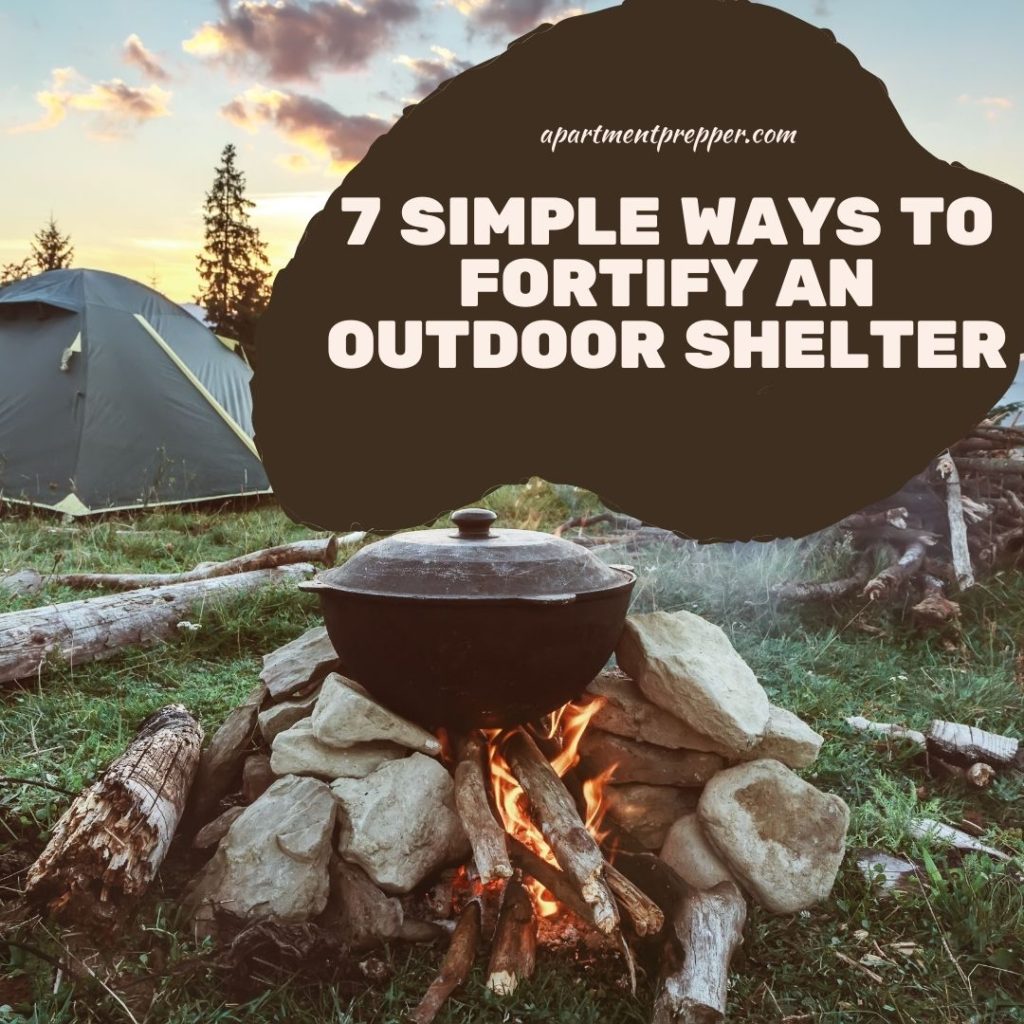Written by Martin Banks
Sheltering at home might be the best option for most survivalists, but it’s not always possible. Although outdoor shelters allow you to remain a bit more mobile, they’re also challenging to secure, making it harder to keep yourself safe. It’s vital to be safe and comfortable when hunkering down away from your base.
If you find yourself sheltering outside, here are a few simple and easy ways to fortify your shelter and up your chances of survival.
1. Choose Your Site Carefully
The first step in fortifying an outdoor shelter happens before you ever start building. You need to choose your site carefully. Take a look around. Is your site flat and easy to build on? Does it look like there has been recent foot traffic through the area — either human or animal? Building on a game trail isn’t the best idea because you could find yourself facing human hunters and animal predators.
If you’re in a low elevation area, are there historical signs of flooding you should be aware of? Before you start collecting materials and building, you need to make sure your location will serve you well in the long run.
2. Elevate Where You Can
Sleeping on the ground is never the easiest thing to do, and in a survival shelter, it’s something you should avoid whenever possible. It’s harder to maintain your body temperature and exposes you to moisture and insects. Wherever possible, elevate your sleeping mat and your survival structure so you’re not on the ground.
3. Don’t Be Obvious
If you’re building a survival shelter because you’re stranded in the wilderness and awaiting rescue, ignore this step because you’ll want potential rescuers to spot you. On the other hand, if you’re trying to hide from aggressors or attackers, the goal should be to make your shelter as unobtrusive as possible.
You can camouflage your shelter with brush collected from nearby plants and trees. Another option is to invest in camography, which is a film you can apply to your structure so it blends in with your surroundings. That will give you an extra layer of protection if someone spots you.
4. Select a Stable Design
If you’re building your outdoor shelter from the ground up, the next step is to choose a stable design. The last thing you need is for it to fall over if someone nudges it or a stiff breeze swirls around your hiding spot. Size and camouflage are important, but if your design isn’t stable, none of that is going to matter.
A round design might look spacious, but it can end up a little wobbly. Lean-tos and triangular shelters are often the easiest to build, and while they might not offer a lot of space, they are very hard to knock down and are easy to insulate.
5. Insulate Against the Elements
Roaming predators and unfriendly brigands aren’t the only things you need to fortify your shelter against. The elements will also be out to get you, and they’re a lot less forgiving than a wandering bear.
Thankfully, there are plenty of elements out in the wild that will double as insulation. Moss, leaves and other dry underbrush, carefully placed between two layers of a wall or on the exterior of your structure, can help it retain heat and keep out the wind. Conversely, you may want to design your shelter to allow better ventilation to keep you from overheating.
6. Heat It Carefully
The elements are perpetually out to get you, but heating your structure isn’t generally as easy as lighting a fire and shutting the doors. There are many precautions you’ll need to consider, from ventilation to keep you from choking on the smoke to how flammable your shelter will become over time as the sticks, logs and other brush you used to construct it dry out.
Be mindful of this flammability factor and choose where you place your fire with great care. The last thing you want to deal with in a survival situation is a wildfire you started due to your carelessness.
7. How Long Will You Be There?
Usually, survival shelters are in place for the long haul, but that isn’t always the case. If you find yourself constantly moving as new threats approach, spending a ton of time building an extensive shelter will be a waste of energy.
As you’re building, think about how long you’re planning to stay there — and start small. You can always build up over time if this ends up being a more permanent base of operations. However, there’s no reason to put in all that extra effort and energy if you’re going to move on in a few days or weeks.
Protect Yourself No Matter Where You Are
Survival shelters in the wilderness aren’t always ideal, but if they become necessary, it’s important to take steps to fortify them to keep yourself safe. You don’t need to be a skilled architect or construction worker to create a shelter that will protect you from aggressors both human and animal. Just be patient and take all the necessary steps to protect yourself, no matter where you are.
Author Bio: Martin Banks is the managing editor at Modded. Follow him on Twitter @TModded for frequent updates on his work.
If you found this article interesting or helpful, please consider helping us out (without costing you anything)! We are an affiliate of Amazon.com, which means we received a small commission if you click through one of our Amazon links when you shop, at totally no cost to you. This helps keep the lights on at the blog. Thanks!



Great info! Thanks for all you do!